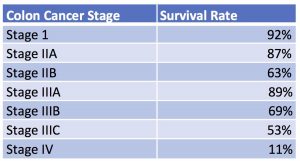Many of us are familiar with the purported benefits of red wine and red grapes in fighting cancer, preventing heart disease, and treating a wide array of illnesses and ailments. Grape seed extract, resveratrol products, and other grape-based products and supplements are widely available on the shelf at many health food stores, and the idea of having a glass of red wine at dinner “for your health” has become a relatively common bit of advice (MedPage Today).
But are the alleged curative properties of grapes verifiable through science, or is their effect just pseudoscience? And what role, if any, do grapes really play in the prevention and treatment of cancer? A team of researchers at Pennsylvania State University hopes to find out.
EXCITING RESEARCH, BUT NOT A SILVER BULLET
In a 2016 study published in BMC Complementary and Alternative Medicine (a peer-reviewed journal), the team at Penn State (comprised of researchers affiliated with the Pennsylvania State Hershey Cancer Institute, Department of Food Science, and Department of Plant Science) posited that a combination of grape seed extract combined with resveratrol – a naturally-occurring bioactive compound in the skin of red grapes and some berries – may indeed have promising anti-cancer properties when used to treat colorectal cancer in both mice and human stem cells (BMC Complementary and Alternative Medicine).
In the lab, the researchers tested the effectiveness of grape compounds against sulindac, a nonsteroidal anti-inflammatory drug with a demonstrated ability to treat colon cancer. One group of mice was treated with a combination of resveratrol products and grape seed extract, another with sulindac, and another kept as a control. Both the sulindac group and the group treated with the resveratrol products/grape seed extract combo saw reduced tumor incidence by over 50%. In addition, the resveratrol products/grape seed extract group saw reduced gastrointestinal toxicity (stomach and intestinal ulcers, which are common side-effects of sulindac). This is an exciting result: in mice, at least, the resveratrol products/grape seed extract combo appears to be about as effective as sulindac, but with fewer side effects (BMC Complementary and Alternative Medicine).
The team then tested the same set of compounds on human colon cancer stem cells (CSCs), with similar results to the mouse model: the resveratrol products/grape seed extract cocktail appeared to be about as effective as sulindac in suppressing proliferation and inducing apoptosis (cell death) of cancer cells (BMC Complementary and Alternative Medicine).
The team at Penn State is hopeful that their work will pave the way for further study, formal clinical trials, and a possible application for grape compounds in FDA-approved cancer therapies. But the efficacy of resveratrol products and grape seed extract as a cancer treatment has yet to be replicated in studies with human subjects, and it’s important to remember that these findings do not yet translate into a pragmatic approach to treatment that human patients can implement today.
ORGANIC SUPPLEMENTS: USE WITH CAUTION
If you’re fighting cancer and frustrated with your treatment plan, you may be tempted to branch out on your own and self-treat with products which are readily available in health food stores and alternative medicine shops. Most doctors would agree that a varied diet incorporating fruits, vegetables, and other vitamin-rich foods is beneficial to overall health, but it’s important to remember that the therapeutic benefits of many over-the-counter herbal supplements and organic compounds remain unverified in clinical trials. Taking these products without the supervision of a doctor may create unforeseen and potentially dangerous interactions with other herbs and prescription medications.
Remember: the fact that a substance is “organic” or “all-natural” does not imply that it is inherently safe. According to the New England Journal of Medicine, dietary supplements are responsible for at least 23,000 emergency room visits in the U.S. every year (STAT). When consumed as a dietary supplement, resveratrol products may cause harmful side-effects in people taking carbamazepine, cytochrome P450 substrate drugs, and antiplatelet drugs, and may even exacerbate certain hormone-sensitive cancers (Memorial Sloan Kettering Cancer Center).
If you are fighting cancer and would like to pursue a regimen of vitamins and herbal supplements alongside your clinical treatment, always talk to your doctor first in the interest of avoiding any unforeseen drug interactions or adverse effects. And if you wish to pursue a new course of treatment altogether, always do so under the supervision of a licensed medical doctor. If you are overwhelmed, frustrated, or don’t know where to turn, a medical referral service – like OncoLogic Advisors – can help you find a new doctor or tailor a new treatment plan to your needs.
IN CONCLUSION
While we have seen some promising research involving resveratrol products and other grape-based compounds, a great deal of study and investigation is still required before they are accepted as an effective strategy for fighting cancer. Herbal supplements and healthy eating alone are NOT a substitute for chemo, surgery, or other established, FDA-approved cancer therapies.
And always remember, if you’re looking for a second opinion, help is out there. You don’t have to resort to untested alternative medicine to discover an alternate approach to cancer treatment.
REFERENCES
MedPage Today – Red Wine Study Hints at Breast Cancer Benefit. Michael Smith. 6 January 2012.
https://www.medpagetoday.com/hematologyoncology/breastcancer/30542
BMC Complementary and Alternative Medicine – Grape compounds suppress colon cancer stem cells in vitro and in a rodent model of colon carcinogenesis. Lavanya Reddivari, Venkata Charepalli, Sridhar Radhakrishnan, Ramakrishna Vadde, Ryan J. Elias, Joshua D. Lambert and Jairam K. P. Vanamala. 9 August 2016.
https://bmccomplementalternmed.biomedcentral.com/articles/10.1186/s12906-016-1254-2
Memorial Sloan Kettering Cancer Center – Resveratrol. Last Updated: 16 December 2016
https://www.mskcc.org/cancer-care/integrative-medicine/herbs/resveratrol
STAT – Celebrity selfies, lax regulations drive booming supplement industry. Megan Thielking. 16 November, 2016. https://www.statnews.com/2015/11/16/celebrity-selfies-lax-regulations-drive-booming-supplement-industry/




